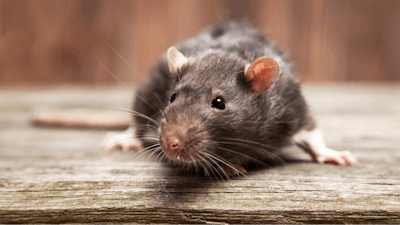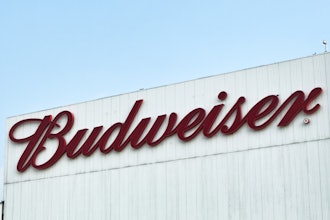
With the COVID-19 pandemic still impacting some countries more than others, global food supply chains are continuing to adjust their operations to maintain food safety. The last thing that overworked and stressed food processors need is another threat to the safety of their products: roof rats.
Increased rodent activity has been a hot topic as of late. At the onset of the pandemic in 2020, rodents made headlines in the U.S. for increased activity and aggression due to their food sources being limited or moved.
In the food industry, rodent threats aren’t taken lightly as food safety is the top priority. This filthy pest is known to spread harmful diseases such as Hepatitis E and leptospirosis to humans in addition to contaminating food products and leaving manufacturers with lost profits as a result. So, what’s different about roof rats?
As the name implies, this pest prefers higher elevations such as power lines, tree branches and building roofs. Given that they are so high up, they often go unnoticed which is problematic for facilities that handle edible consumer goods. Just one roof rat inside a food processing facility can cause thousands of dollars in product and structural damage. Unfortunately, roof rat populations have been expanding since before the pandemic. Historically, coastal areas were the primary hot spot for these rodents, commonly called “ship rats” because they frequented industrial areas and ports however, but between 2005 and 2020, their populations have spread much further inland.

Why Roof Rats are a Threat to Food Processing Facilities
Because food processing facilities receive and send out shipments daily, it’s easy for roof rats to slip into transportation vehicles, packaged goods and eventually your building. Not only does this jeopardize your business’ products and your reputation, but your employees’ health is also at risk when it comes to roof rats. Roof rats’ droppings and urine can contaminate food, spreading salmonellosis and other foodborne illnesses. Meat processing plants face a unique health risk as trichinosis can be contracted by those who eat undercooked meat from animals that fed on rats.
Like Norway rats, roof rats also have powerful teeth and can chew through almost anything. From gnawing through electrical wiring and walls to products and packaging, these tough pests can become a costly nuisance for commercial properties in no time.
With fall approaching, rodent activity will increase, and roof rats will begin to seek shelter. Food manufacturing facilities provide the sustenance required for pests to thrive and reproduce which makes them a prime location. While they can be hard to eliminate once they get in and begin reproducing, there are steps you can take to help prevent roof rat issues.
How to Deal with Roof Rats
When it comes to roof rats, prevention is key and focusing your efforts on keeping them out will go a long way. Proactive exclusion tactics such as sealing cracks and holes in your property, replacing damaged vent covers and shingles on your roof and keeping doors closed will help prevent roof rats from entering your facility.
While it might be tempting to take care of what may seem to be a minor roof rat issue in-house and get back to business quickly, it’s not that simple. Roof rats should be treated differently from other rodents, so it’s best to work with a pest management professional understands the animal and is trained to handle them. Each facility is unique in its design and function and a pest control professional will be able to create a customized treatment plan.
The Final Word
 Meek
Meek
Frank Meek is a Technical Services Manager for Rollins. As a board-certified entomologist and 30-year industry veteran, he is an acknowledged leader in the field of pest management. For more information, email [email protected] or visit www.orkincommerical.com.























